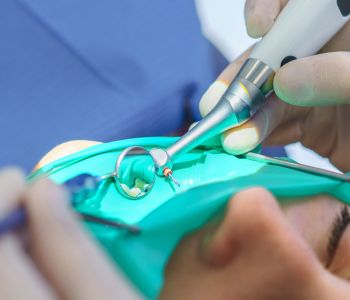The Symptoms of Dental Cavitation and How It Can Be Detected For Treatment
Dental cavitation, also known as a cavitation lesion, FDOJ (Fatty Degenerative Osteonecrosis of the Jaw), or NICO (Neuralgia Inducing Cavitational Osteonecrosis) or jawbone osteonecrosis, occurs when a hole or void forms in the jawbone following a tooth extraction, typically due to incomplete healing or infection. Dentists like Dr. Anshuman Rawat at Advanced Dental Practices in Wrentham, Massachusetts, continue to stress the importance of detecting these cavitations, which can lead to chronic health issues when left untreated.

The Symptoms of Dental Cavitation
Symptoms associated with dental cavitations can surface in various ways, providing clues for detection. One common indicator is persistent pain or, more like, discomfort in the area where the tooth was extracted, often unrelated to any visible signs of infection or inflammation. This pain may be chronic and difficult to pinpoint, sometimes radiating to nearby areas of the face, head, or neck.
The typical cytokines (basically communication molecules of the immune system) found elsewhere in the body at a site of inflammation are present in low numbers in cavitation sites. Hence, these areas do not show typical signs of inflammation like warmth, redness, swelling, pain, etc. The cytokines found in jawbone cavitations (RANTES or CCL5) are linked to several cancers and chronic inflammatory diseases.
Additionally, patients with jawbone cavitations may experience disturbances in other organ systems due to its effect on the energy meridians. This can affect oral function and overall quality of life.
Patients with dental cavitations may also exhibit systemic symptoms such as fatigue, headaches, and malaise. These nonspecific signs can be attributed to the chronic inflammatory response triggered by cavitation, which may impact immune function and contribute to overall feelings of unwellness.
Technology Can Help Detect Cavitations
Diagnostic techniques such as dental X-rays, cone beam computed tomography (CBCT), and thermography can help identify cavitations by visualizing changes in bone density, structure, and blood flow within the affected area. Additionally, advanced imaging modalities like MRI or ultrasound may be employed to assess soft tissue involvement and detect any associated complications.
Schedule An Appointment Today!
Detecting dental cavitations relies on recognizing symptoms, including persistent pain, inflammation, sensory disturbances, and systemic manifestations.
Early identification and appropriate management of these lesions are essential for preventing further complications and promoting optimal oral and systemic health. To schedule an appointment with Dr. Rawat, please call (508) 456-7111 today.














